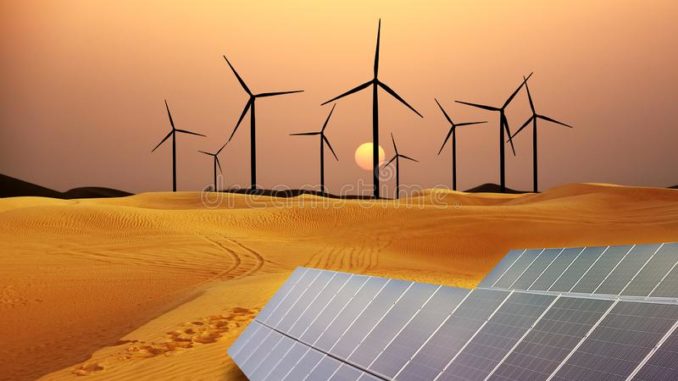
As a nation seeking to achieve rapid economic growth in an era of climate change, India has committed itself to advancing renewable energy and promoting reforestation. Both these approaches provide multiple benefits for our people and environment, and they will also contribute to the effort to keep global average temperatures under 2°C. Further, some analysts have projected that renewable energy can generate an additional 2,30,000 jobs by 2022 and improve air quality – two critical issues for our country.
Prime Minister Narendra Modi has not only committed India to the goal of 175 GW of renewable energy by 2022 during the Paris Conference of Parties in 2015, he has also stated at the UN Climate Action Summit in New York last year that the country would seek to achieve 450 GW of renewable energy. This aspiration is built on the solid work that has gone into adding approximately 45 GW of renewable energy capacity in the country since the Paris announcement. India currently ranks fourth in the world in renewable energy capacity (excluding large hydropower), after China, the US and Germany.
However, in order to continue making significant progress on our renewable energy ambitions, India will need to address several barriers. One critical aspect that is only now starting to get attention, is land. Solar and wind power have 3-12 times the land intensity of coal for every megawatt-hour. Anyone who has travelled across India and seen solar farms would immediately understand this. Given that land is one of the scarcest commodities in India, if we do not plan the use of land for our renewable energy infrastructure carefully, we will witness conflicts.
We are a densely populated country and about 60% of our people depend on agriculture and natural resources for their livelihoods and basic needs. The case of Charanka solar park in Gujarat where the Maldhari pastoral communities have been affected is an indication of what may lie ahead. Similarly, the plight of the Great Indian Bustard in Rajasthan has also drawn attention to the impact of renewable energy on important wildlife and biodiversity. For this critically endangered bird – less than 150 of whom survive in the country today – death from collision with wind turbines and power lines is emerging as a major threat that could decimate them.
We thus need strategies to mitigate social and ecological conflicts. A recent research analysis carried out by The Nature Conservancy has concluded that if India pursues business as usual to achieve its RE goal of 175 GW by 2022, it will impact ecologically sensitive and productive agricultural land equivalent to the land represented by the states of Himachal Pradesh and Chhattisgarh respectively. However, the good news is that the analysis also shows that India has 10 times the land needed for meeting its goal that is of low social and ecological value.
Instead of identifying land for one renewable energy project at a time, high solar and wind potential states should proactively map out areas where they can meet their longer-term renewable energy targets. Doing so has several co-benefits: states can avoid the use of lands that are needed to assure ecological (including water) security, national food sufficiency and people’s livelihoods. What’s more, the potential to encounter opposition reduces. Such conflicts, we know, cause delays in advancing development projects, which then increases their costs. Hence, from a business perspective too, such land planning should be a welcome move.
Such landscape-scale plans for siting infrastructure can be created relatively easily because of recent technological advances that allow planners to marry predictive modelling with Geographic Information Systems (GIS). An additional advantage of such plans is that they can facilitate land planning for multiple objectives. In Madhya Pradesh, for example, our analysis focussed on identifying land for reforestation, in addition to renewable energy.
India has a national policy goal for covering a third of our land with forests. At a global level, India has also committed to creating an additional carbon sink of 2.5 to 3 billion tons of carbon dioxide equivalent by 2030, primarily through forest and tree cover. This too requires land. If proactive land planning is not done, states may establish renewable energy projects where reforestation potential is high and vice versa, which would not be efficient.
Access to energy is a fundamental requirement for India to achieve its development goals. Ensuring that it comes from greener sources and without putting poor communities or natural heritage at risk will help India achieve better outcomes. Managing development and environment as complementary goals and finding win-win solutions that policy makers and other stakeholders can adopt at scale is possible in many situations.
Matter referenced:
Seema Paul and Dhaval Negandhi, Times of India, Ahmedabad, Tuesday, 21st January, 2020.
By: Dr. Bhawana Asnani.
Happy to see Reviews, Additions, Suggestions and Comments, further.

Leave a Reply
You must be logged in to post a comment.